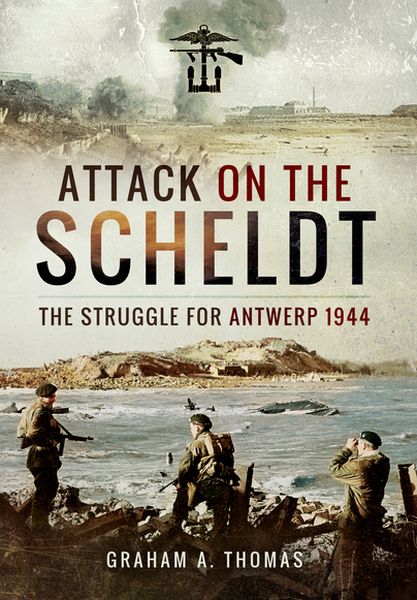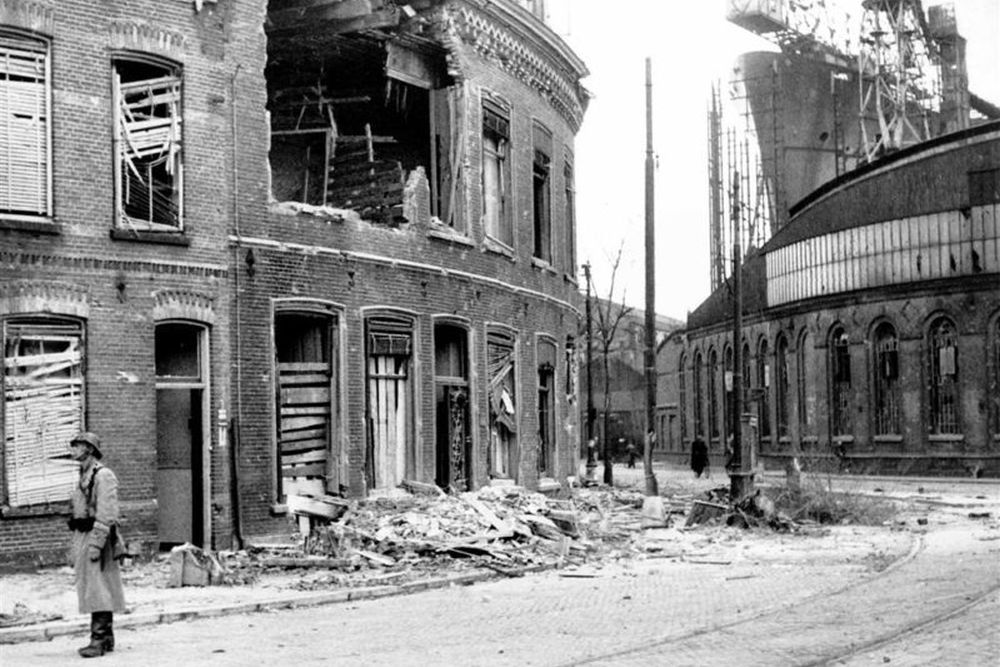| Title: | Attack on the Scheldt |
| Subtitle: | The Struggle for Antwerp 1944 |
| Author: | Graham A. Thomas |
| Publisher: | Pen & Sword Military |
| Published: | 2017 |
| Pages: | 212 |
| Language: | English |
| ISBN: | 9781473850675 |
| Review: |
The conquering and making accessible the Antwerp harbour, was one of the most important goals of the Allies during their march in North-West Europe in the second half of 1944. Yet, the battle for the harbour, more concrete the conquering of the Scheldt – the access to the harbour – does not get the attention it deserves by historians and writers. They pay more attention to, for example, the landing in Normandy and the Battle of the Bulge. With "Attack on the Scheldt" writer Thomas tries to change this. Graham A. Thomas is a British/Canadian historian and journalist who specialises in the ups and downs of the British army and air force during the Second World War and the Korean War. Currently he’s the editor of "British Army Review", a 3-monthly magazine published for the British army. He’s also the writer of three historic books about different war subjects and a couple of historic novels. After the Battle of Normandy, the Allies advanced to Northern France and Belgium. The harbour of Antwerp fell into their hands on 4 September 1944, virtually intact, since the Germans had quickly retrieved in Northern and Southern direction, because the Belgian resistance had made the undermined harbour installations free from explosives. Moreover, the harbour wasn’t that important to the Germans, because they had acquired access to the loading and unloading facilities in Antwerp, and the southern and northern banks of the Scheldt. When the Allies had conquered the harbour their march came to a standstill. The attack on the German positions along the Scheldt discontinued for over a month. During that period, the Germans were able to strengthen their positions and to regroup their troops. They changed the island of Walcheren into a rather impregnable fortress and strengthened their key positions along the canals and at the town of Woensdrecht. After having concluded this, author Thomas asks himself two profound questions: Why did the Allies not advance and why did the Germans continue to fiercely defend the positions in Zeeland when they weren’t able to stop the march of the Allies in the end? Eventually the Allies would need 85 days to defeat the Germans along the Scheldt. On both sides thousands of soldiers died, tens of thousands soldiers were injured, hundreds of civilians lost their lives, damage was done to all villages and towns in the area and Walcheren was flooded. The Allies did this on purpose by bombing the sea dikes, with the main reason to demoralise the Germans and to eliminate their means of communication. This was a successful action, but not for the inhabitants of the island: they lost their means of existence. It took until 1947 for the island to be free of water again, and for the first trees to be planted. Graham Thomas describes in detail how the 21 Army Group, of which amongst others the First Canadian Army was part, conquered the West-Flemish coastal area, Zeeland Flanders, South and North Beveland and Walcheren. The Canadians let by Lieutenant General Simonds were able to conquer the area metre for metre, especially thanks to the excellent corporation with the Royal Air Force and the Royal Navy and by frequently using tanks and other combat vehicles that supported the infantry. After the Scheldt had been conquered on 8 November, the mines were swept (Mine sweep actions on the Scheldt, 1944) and 18 days later the first coasters from England arrived in Antwerp. As of the end of November, each week 48,000 troops, between 9,000 and 10,000 tons of vehicles, 40,000 tons of fuel and 275,000 tons of goods would arrive in the Flemish harbour. These numbers would ultimately result in the fall of the Third Reich from the Western direction. Because of the fact that Thomas is an expert in the history of the British army and the British air force, it would be easy to assume that that’s the reason why he pays little attention to the role of the navy. However, the fact that he completely chooses to ignore the significant role of the navy, is a flaw of the book. The role of battleship HMS Warspite and the monitors HMS Roberts and HMS Erebus as artillery platforms were just as important as the canons of the army that attacked the Germans by land. In addition, the British and Dutch mine sweepers had already started sweeping mines at Oostende as of mid-September. These mine sweeping actions took place at the same time of the conquests of the Allied ground troops. Moreover, the Allies completely dependent on the landing vehicles during the amphibian landings that took place at Walcheren. As mentioned before, "Attack on the Scheldt" provides a very detailed report of the battle that took place in North-West Europe – a battle of which not much literary information can be found. The role of the navy is underexposed in the book, but the reader does get a good picture of what the Allies had to undergo in order to chase away the Germans from the banks of the Wester Scheldt. However, the reader doesn’t get any answers to the two questions the author asked himself. That is a somewhat strange conclusion after finishing reading the book. Even stranger is the fact that these questions aren’t difficult to answer. You only have to go beyond some sacred cows. Although Graham A. Thomas with "Attack on the Scheldt" produced a sound historical work, he didn’t dare answer the questions himself. |
| Rating: | |
Information
- Translated by:
- STIWOT translator
- Article by:
- Peter Kimenai
- Published on:
- 20-09-2017
- Feedback?
- Send it!





